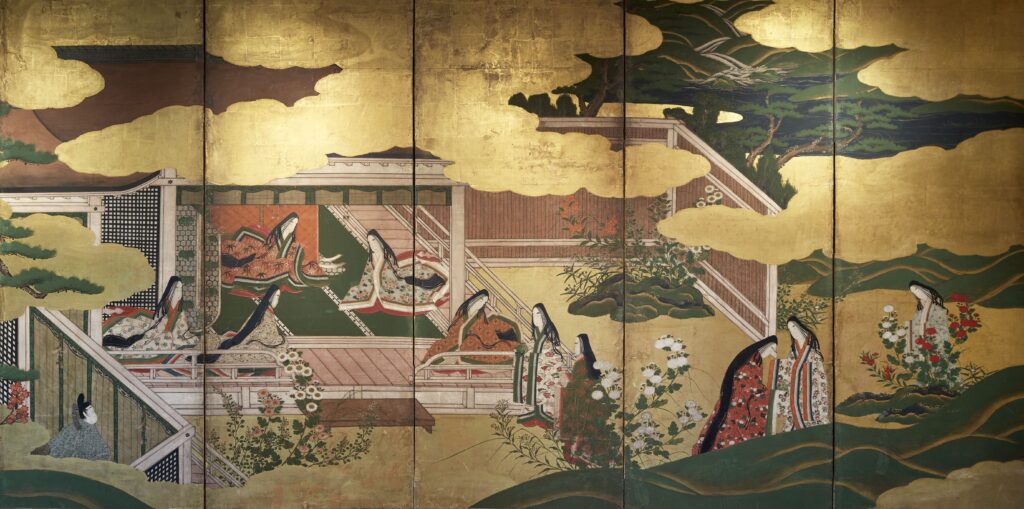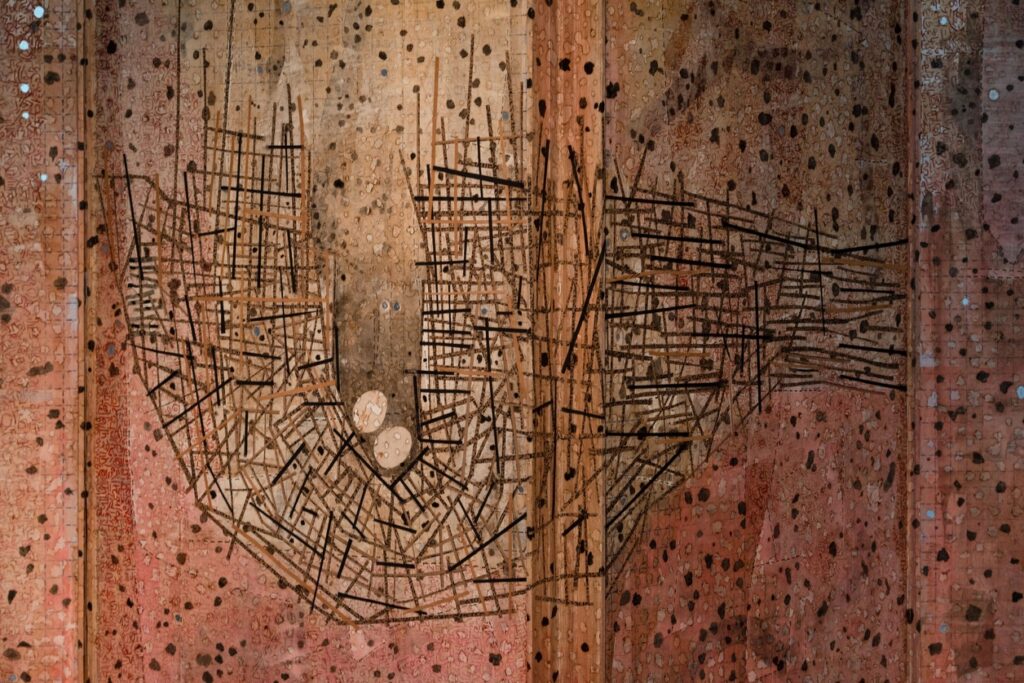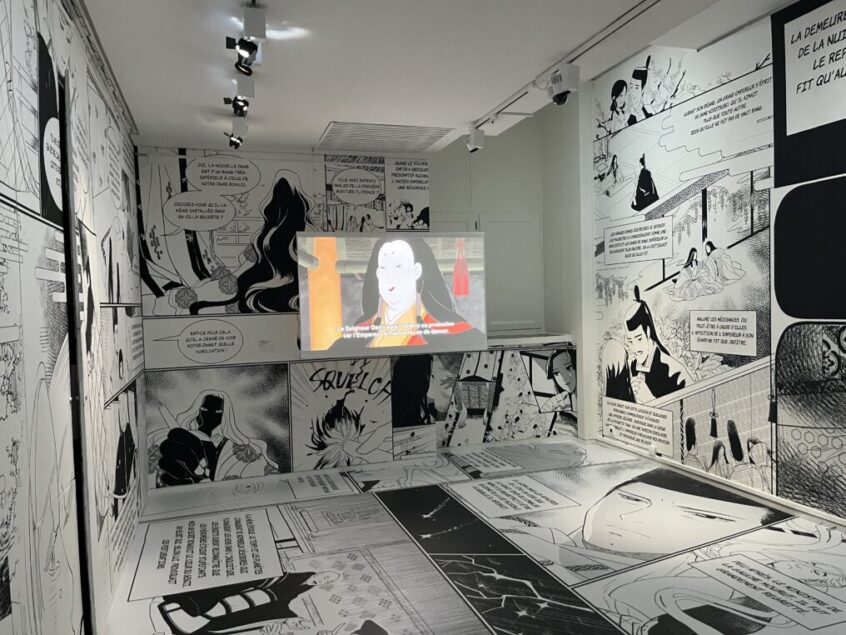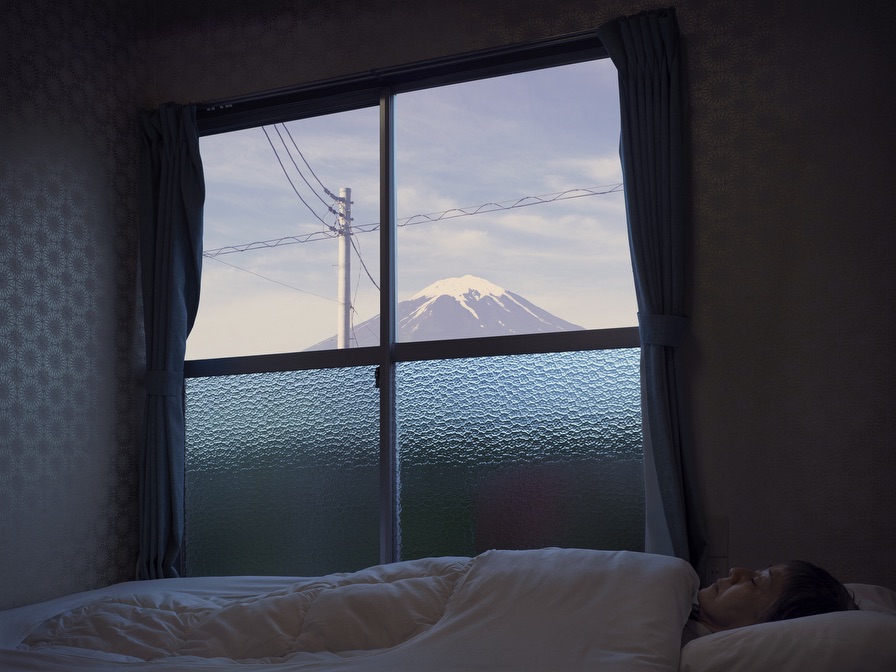The Japanese season is booming at Musée Guimet where the main exhibition, “At Prince Genji’s court” has just opened with the celebration of women’s literature in the Heian Period (794-1185), mixing short poems, waka, and prose. Fashion, art and buddhism illustrate love in “The Tale of Genji” which has fascinated generations of Japanese, during multiple periods. The story recounts the life and loves of the Imperial Prince Hikaru Genji, who cannot claim the throne. On the second floor, photographs of contemporary Japan by Pierre-Elie de Pibrac, look beautiful in the rotunda and on the third floor, Indian geologist turned artist, Manish Pushkale, shows a 19 m long screen depicting sceneries of the Andaman Islands.

Screen with six leaves, Genji Monogatari, époque Momoyama, end 16th-early 17th century, private collection © Marc Boyadjian
The book was re-published many times over the centuries and it indicates many olfactive fashions, perfume mix, but also the incredible talent of the princesses. Incense ceremony is an important moment in society and fragrances are associated to images. Silk weaving is also a predominant art and modern pieces of fabric by Itaro Yamaguchi are shown here. An amusing scene representing France with ladies and their crinolines was painted by Utagawa Yoshitora in 1862.
A whole room in black and white is devoted to a modern manga transposition of the Tale showing how it is eternal. The multiple lacquer writing boxes are beautiful and the illustrations in ink and color give a good idea of the refinement of the courts. But I have to admit that the photo exhibition upstairs won me over.
The title of the show, Hakanai Sonzai, is also a fable, a journey through contemporary Japan. Pibrac embarked in 2019 and remained during the pandemic with his family in search of a world torn between tradition and modernity. The pictures of men set in the hot baths or going to the office, translate the solitary individuals and social pressures. Pibrac considers it “an initiatory journey w-in which poetry weaves invisible bonds between the characters involved”. A Michelin map shows you where he travelled to. You can order the book of photographs for 55€. (Until January 15).
Upstairs, on the fourth floor, “To whom the bird should speak” is a very long screen painted by Manish Pushkale on the erosion of indigenous cultures in the Bay of Bengal. Born in 1973, he became a self taught artists after studying geology and paleontology. (Until March 4)

Manish Pushkale, Detail of the 19 m screen on the Andaman Island© Manish Pushkale, courtesy Galerie Akar Prakar, 2023
At Prince Genji’s court is on until March 25, Musée Guimet.
Share this Post





2 Comments on “Musée Guimet celebrates Japan, a thousand years ago and today”
The Musee Guimet is a must-visit, and I enjoy your newsletters.
Saw the Genji exhibition. It will stand up to any piece of art produced in the West. An undiscovered treasure!